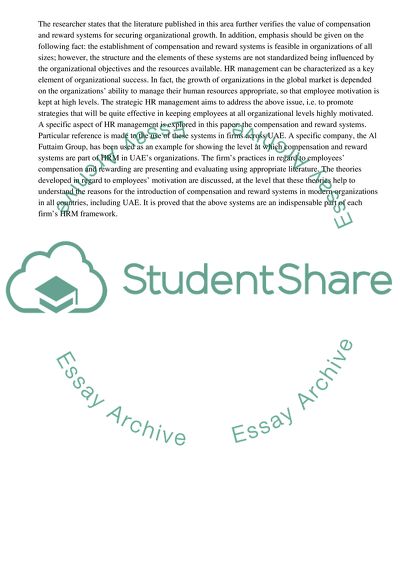Cite this document
(Compensation and Reward Systems Used in Today's Companies in the UAE Research Paper, n.d.)
Compensation and Reward Systems Used in Today's Companies in the UAE Research Paper. Retrieved from https://studentshare.org/management/1797159-compensation-and-reward-systems-used-in-todays-companies-in-the-uae
Compensation and Reward Systems Used in Today's Companies in the UAE Research Paper. Retrieved from https://studentshare.org/management/1797159-compensation-and-reward-systems-used-in-todays-companies-in-the-uae
(Compensation and Reward Systems Used in Today'S Companies in the UAE Research Paper)
Compensation and Reward Systems Used in Today'S Companies in the UAE Research Paper. https://studentshare.org/management/1797159-compensation-and-reward-systems-used-in-todays-companies-in-the-uae.
Compensation and Reward Systems Used in Today'S Companies in the UAE Research Paper. https://studentshare.org/management/1797159-compensation-and-reward-systems-used-in-todays-companies-in-the-uae.
“Compensation and Reward Systems Used in Today'S Companies in the UAE Research Paper”, n.d. https://studentshare.org/management/1797159-compensation-and-reward-systems-used-in-todays-companies-in-the-uae.


